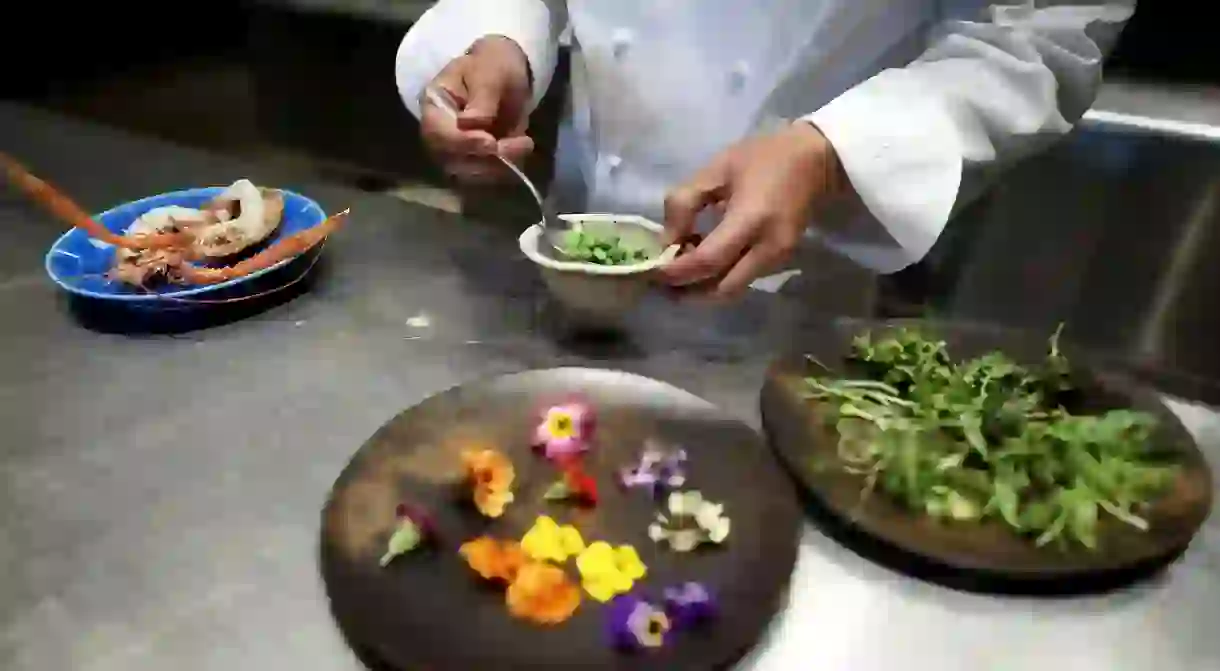The Best Michelin-Starred Restaurants in Tokyo

Boasting more Michelin-starred restaurants than any other city in the world – and dominating San Pellegrino’s list of the best 50 restaurants in Asia – it’s no secret that Tokyo offers one of the best dining scenes on the planet. But its very best Michelin-starred restaurants? Read on to discover our top Tokyo restaurant picks.
To explore the wonders of the country, from neon-lit skyscrapers to bamboo forests dotted with ancient temples, join Culture Trip’s curated 12-day trip to Japan.
Ginza Kojyu
The three Michelin-starred Ginza Kojyu is one of the best places in Tokyo to experience kaiseki, a traditional Japanese multi-course. You’ll feel like you’re eating in someone’s living room thanks to the cosy interior and kitchen layout, from which you can watch your food being prepared at the counter. The seasonal menu emphasises traditional Japanese cuisine, along with a few experimental dishes. The restaurant is quite small and relatively affordable, so it’s best to reserve a table in advance.
Kagurazaka Ishikawa
Kagurazaka Ishikawa has been awarded three Michelin stars for its refined cuisine and all-round intimate dining experience – from the attentive staff who will help you find your way to the restaurant’s hidden alleyway location, to the chef who likes chatting away to customers. Guests are presented with several fixed courses, typically consisting of an appetiser, soup, sashimi and a grilled main. Seating is offered in elegant private dining areas or along the cypress-wood counter with a view of chef Hideki Ishikawa at work, while kimono-clad servers are a nod to the Shinjuku neighbourhood’s history as a prominent geisha district.
Joël Robuchon
Joël Robuchon is the eponymous restaurant from the world-renowned late chef Joël Robuchon, who set up numerous successful ventures around the world. Robuchon offers an outstanding take on modern French cuisine – and this two Michelin-starred restaurant, in Yebisu Garden Place, offers several set menus, along with an excellent selection of à la carte options. Be sure to save room for the delicious Kyoho grape mochi with fresh almond ice cream, soya milk and honey coulis.
L’Effervescence
L’Effervescence, a French term that translates to “bubbles”, “that which makes people gather” or “lively” (depending on the context), befits this three Michelin-starred restaurant perfectly. This French-themed restaurant, which harnesses the best of Japanese ingredients, is known for its upscale take on the McDonald’s takeaway apple pie; their version is made with wild boar or sage and matsutake mushrooms, and is served in a red takeaway box. The restaurant is also known for its exquisite desserts, including its caramelised apple and kuromoji ice cream served with muesli, plus its excellent list of French wines.
Narisawa
Chef Yoshihiro Narisawa’s culinary training in Italy, France and Switzerland is felt in his dishes, which are rustled up with European cooking techniques. Narisawa is deeply passionate about the environment, and this is reflected in his dishes, which are designed to mirror the Japanese seasons with fresh Japanese ingredients. The two Michelin-starred restaurant is particularly well-known for its unusual Bread of the Forest and Moss Butter, which rises at the table while you are enjoying your other courses.
RyuGin

RyuGin strikes a balance between time-honoured Japanese cooking techniques and original dishes. It has earned three Michelin stars for its menu that’s limited to a seasonal full-course degustation set, along with à la carte options available at certain times of night. Many dishes include hot and cold elements, such as the restaurant’s signature dessert that incorporates fruit that’s both boiling and frozen with liquid nitrogen. The significance of its name – Ryugin that means “singing dragon” or “dragon song” – can be felt in all aspects of the restaurant decor, from the plates to the artworks of the mythical creature on the walls.
Quintessence
Quintessence’s culinary philosophy is based on three principles: respecting the product by only using premium ingredients, pursuing the cooking process by pushing the boundaries of current culinary practices, and attention to detail in the seasoning process to enhance the subtle flavours of the food. Before opening Quintessence, chef Shuzo Kishida worked at L’Astrance restaurant in Paris, where he learned the restaurant’s now-signature technique of cooking meats for an extended period of time at a low temperature. Menus at this three Michelin-starred restaurant are carte blanche, so the chef decides on the featured dishes each day based on seasonal ingredients.
Hommage
Chef and owner Noboru Arai spent two years honing his cooking skills in France before opening this swanky Tokyo eatery in the traditional Asakusa district of Tokyo. Serving fine French food with a Japanese twist, Hommage has earned two Michelin stars for its ever-changing menus, which include vegetarian options on request and decorative cakes. Expect fresh seasonal ingredients for dishes such as the foie gras and scallop tart, plus an extensive wine collection.
Did you know – Culture Trip now does bookable, small-group trips? Pick from authentic, immersive Epic Trips, compact and action-packed Mini Trips and sparkling, expansive Sailing Trips.
Amy Blyth contributed additional reporting to this article.













